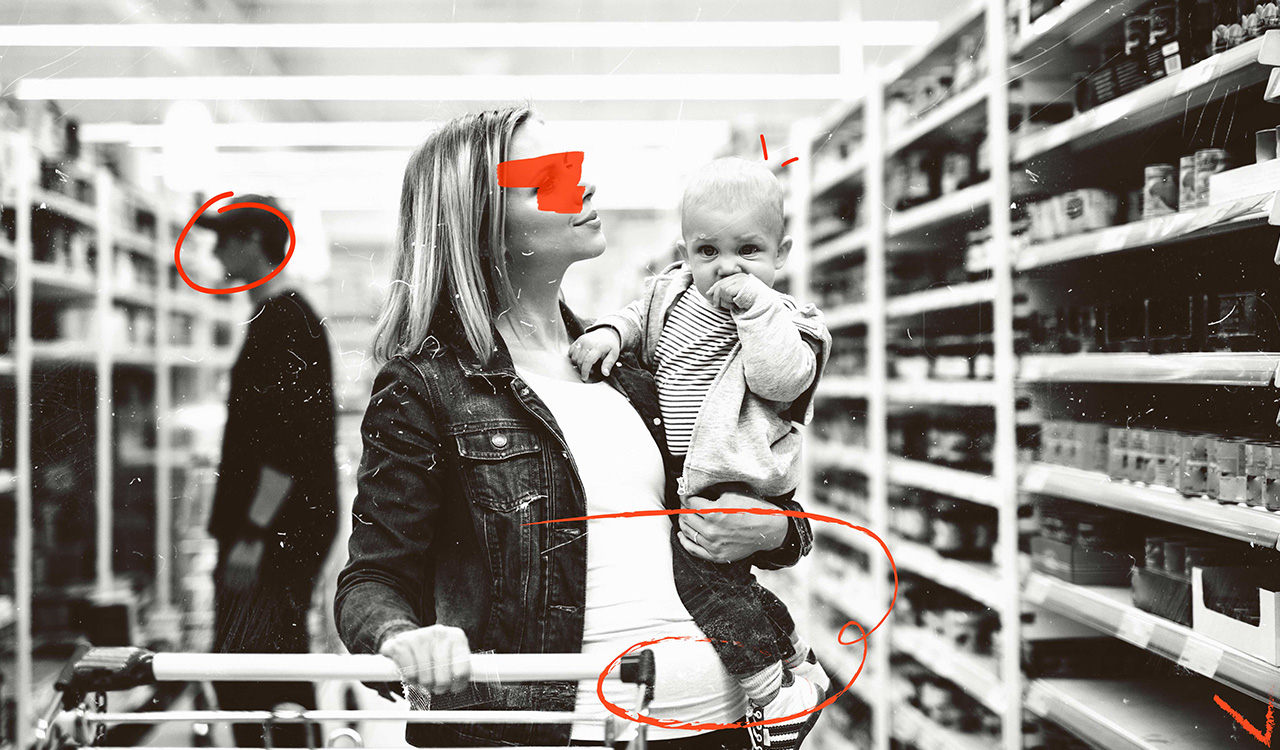It has taken a month or so for the new Covid-19 reality to do what two generations of business consultants, retail strategists and brand marketers have not been able to do: reinvigorate the center aisle of the grocery store. Take a walk through any food store in your new Covid protective mask. The once exciting peripheries chock-a-block with fresh kale of various heritages, artisanal cheeses and cage-free poultry parts are still robustly stocked. Move your cart into the once moribund middle corridors however, and you see how the zeitgeist has shifted our passions. Canned soups, packaged mac-and-cheese, cracker brands seemingly rediscovered from mid-century modern Smithsonian exhibits and throw-back sitcoms verge on sold-out. Suddenly, the more preservatives the better.
Childhood Nostalgia
It may be easy to consign these signals to consumer fear and loathing or a new generation of Depression survivors — our shared dread of running out of anything. Are we genuinely scared of starvation or having to use Kleenex in lieu of toilet paper? Or, are these once and future default settings simply patterns re-emerging as a mechanism to re-boot our psyches back to an old, old normal and the comfort of its branded packaged processed convenience replacing the risk of the new, the fresh, the bespoke?
21 Days
Dial forward for a moment as Stephen Foster must have during the Civil War to write the song \”When This Cruel War is Over.\” Imagine the liberation from our homes and we are unleashed again into the mercantile universe. Our guru friend Tony Robbins and the AA founders used to tell us that it takes 21 days to make a new habit. The folks who wanted us to wear seatbelts told us that it takes 12 consecutive clicks of the harness before it becomes routine.
[callout]It is up to retailers to reimagine a new relevance for themselves. If all we find the same-old, same-old when we take our first liberating steps out, we will almost certainly scurry back to the nest, voluntarily.[/callout]
We will have been sequestered for long enough to have evolved a new behavioral reality, one that includes an hourly sweep of door knobs and faucets with anti-bacterial cleanser, intermittent hand washing throughout the day and taking the stairs in preference to riding elevators with more than two people ensconced. We will have learned not to touch our faces, to neither shake hands nor hug (or even air kiss), to walk at a pace that keeps us at a safe distance from anyone and to carry a disinfectant wipe at the ready for such doors which do not automatically open.
Back to the Future
When can we happily enter the old terrain? Can we ever return to Macy\’s for the spectacle of abundance, sights, sounds, smells and sensory delights it offers? Or will we have learned that it is in Amazon we trust? Will we reconvene to party hardy at our bar or bistro of choice? Or rather, do we forsake the boulevard of dreams for the now proven joys of Zoom-based VCH (virtual cocktail hour) with far-flung friends? Can we imagine the day of a grand shedding of our cultural-plague mask and trepidation to reengage?
Future Reimagined
Thus, the future careens into our present. For all of us who use mobile deposit on our phones and our cards as cash, would we return to the bank and its germ-laden ATM anytime soon? Think about it: Do banks need branches on every street corner if we have a carryover of mistrust of the health safety of our paper money?
And there\’s online grocery. This may be the most dramatic behavioral change emerging from the pandemic. We may not have ordered groceries from an online service before, but now we have. The system will have to up its game in terms of redistribution of its workforce, so we don\’t experience long delivery delays – or getting delivery times at all.
Perhaps we haven\’t trusted the fit of jeans, bras or shoes ordered online before, but now we do – powered by free returns. Is there a reason to drive to the mall or take a subway to trudge along the interior store pathways surrounded by a sea of excess merchandise with and inattentive sales staff and suspicious security guards eying us and our bags?
Live Entertainment
Imagine when we can return to the movie theaters and it falls to them to take our temperatures as we enter — and we\’ll be seated in pre-reserved staggered seats. Restaurants will offer only two-top tables, spaced six feet apart (so much for bar seating) so we can dine alone in isolation but not alone. Soul Cycle had already begun a shelter in place by offering up only every other bike.
Cocooning in Place
When Faith Popcorn coined the term Cocooning in the 80s, it was in recognition that we really wanted to sleep through our disco naps and burrow into the comfort of home. This new reality is Cocooning on steroids. The challenge it poses to our social construct is whether we move from cocoon to burrow onto full-on hibernation.
Post-Covid Retail
It is up to retailers to reimagine a new relevance for themselves. If all we find is the same-old, same-old when we take our first liberating steps out, we will almost certainly scurry back to the nest. Right now, most retailers are thinking only about how to survive to the next day. The visionaries among them are considering a better plan. What we really need is a task force empowered to re-envision the retail experience as the social connector it can be, filled with sense and sensibility, product education and brand connoisseurship, personal service and civility.
Of course, the uber-visionary leaders could be working to offer their sales staff online learning/training via FIT, SCAD, RISD and others to teach their brand ambassadors how to elevate the consumer shopping experience. These executives would be doing more than furloughing their people; they\’d be preparing a new retail must-have worldview to lure us back with something more than basing a business on the race to the bottom.
In New York, we\’re seeing all the boarded-up luxe boutiques in Soho and beyond. Think of the luxury customer who is used to touching cashmere and jewels encased in precious metals. How will our staying-safe expectations change when we are back in the stores where touching merchandise is fundamental to the shopping experience?
So many things to think about in redesigning retail for a post-pandemic shopping culture. I say, get those cross-disciplinary ideation teams working now! It will take a fusion of data science, health and the behavioral sciences to help figure this one out.
The worst-case scenario, of course, is that publicly traded retailers move quickly to discount current inventories and put pressure on vendors to slash prices to move goods and shore up badly crippled balance sheets.
The best case scenario – and one in which we\’d like to help – is a world of meaning through which together we reinvigorate the social joys of shopping and its restorative ability to diminish the anxiety so many of us are experiencing. At some point, we will deserve to reward ourselves in mindful and appropriate ways, thankful to all the everyday heroes who brought us through this crisis.




